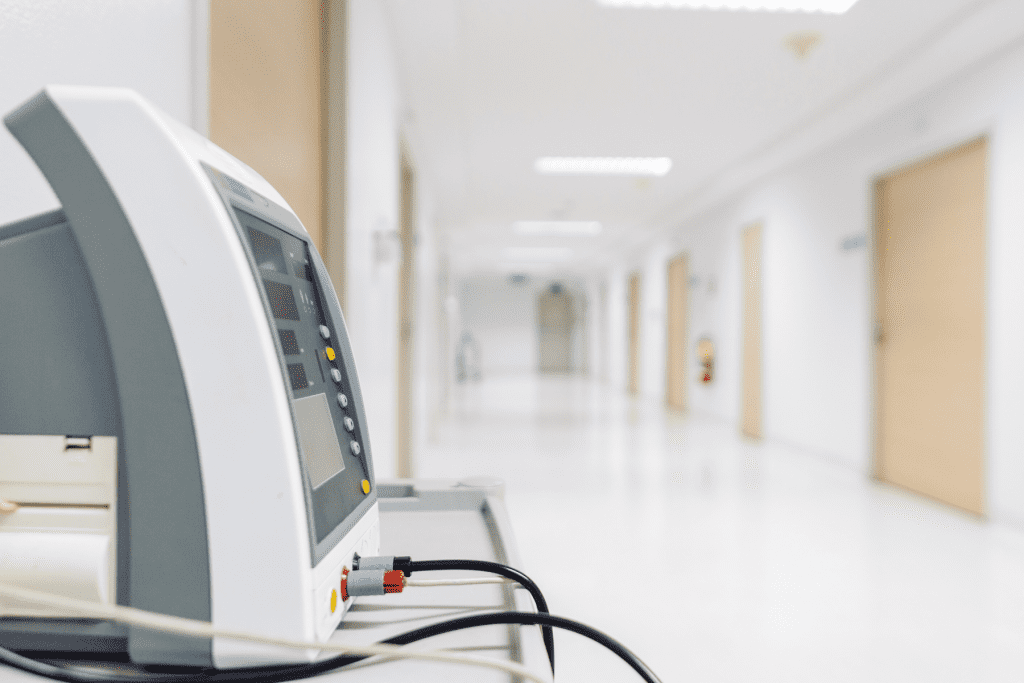Did you know that there are approximately 130 million emergency visits each year? Approximately 2 million people were admitted into ICU facilities.
Vital signs monitoring is critical for any health care facility. It can provide crucial insight into patients’ health and stability. The type of monitoring device your facility needs depends on common diagnoses and your medical personnel.
If you have an interest in learning more about what types of patient monitoring devices you need, then keep reading on.
Vital Signs Monitoring
Before deciding on vital signs equipment, you have to determine what vital signs require monitoring. Many simple pieces of equipment, such as a pulse oximeter, can monitor heart rate or oxygen saturation levels.
However, an inpatient medical facility may need more in-depth and closer monitoring. Some common vital signs that need monitoring are:
- Heart rate
- Blood pressure
- Oxygen saturation
- Respiratory rate
- Temperature
- ECG
- End-tidal carbon dioxide (ETCO2)
Keep in mind, not all of these vital signs may need to be covered in your facility. However, respiratory patients may need more specific vital checks. For example, patients on a ventilator will need closer monitoring.
They will need frequent checks for oxygen saturation levels, ETCO2, and respiratory rate.
If you work mainly in an outpatient center, then your patient clientele is different. A simple pulse rate and oxygen saturation check may be the only thing needed. However, most health care facilities require equipment with more extensive monitoring.
At a minimum, this includes heart rate, blood pressure, oxygen saturation, temperature, and respiratory rate.
Patients who are more medically complex could have quick drops or rises in blood pressure and heart rate. For that reason, you need a high-quality, continuous machine that can keep up.
Vital Signs Monitoring Equipment
What equipment do you need to monitor vital signs? First, determine what type of monitor you want.
Do you want a large touch screen? Does it need to be portable?
A quality vital signs machine will have to be lightweight and have a backup battery in case the power goes out. It will be easy to mount on the wall or transition to a rolling cart.
You can also look at different attachments for bedside rails. Depending on the layout of the facility, you may also consider purchasing extendable mounts. This lets you pull your monitor out from the wall to print reports and change settings.
A high-quality machine will let you fine-tune parameters for alarms, normal ranges, and frequent checks. For example, some patients may need automatic blood pressure checks every hour. Unstable patients might need their blood pressure checked every fifteen minutes.
If you are dealing with abnormal ranges, then you don’t want the monitor constantly alarming. In those cases, doctors and practitioners should be able to easily re-set the ranges you desire for each patient.
Patient vital signs monitoring screens can range in sizes from approximately seven inches to 15 inches.
If you need ETCO2 then you might consider investing in a specific capnography machine. These machines are beneficial for patients on ventilators or who have respiratory conditions.
Cardiac facilities could benefit from ECG or EKG machines. These machines provide a 12-lead electrocardiogram. It can give greater insight into someone’s cardiac health than basic monitoring systems.
Vital Signs Devices and Studies
Vital signs have been monitored for decades now. While monitoring vital signs is one of the simplest forms of assessing one’s health, it can be overlooked. However, when you ask people how to monitor vital signs, they may have a variety of answers and justifications.
A lack of equipment or an inability to use it may result in a rapid deterioration of someone’s health. One study looked at how intermittently monitored vital signs impacted patients’ health.
In two studies, researchers found that respiratory rate was one of the largest indicators of health deterioration. Researchers had a challenging time determining if other vital signs that were intermittently monitored had a direct correlation with health deterioration.
This points out a large area of emphasis. The researchers concluded that continuous, high-tech monitoring systems could prove to be larger indicators of health and health decline.
Another study looked at predictive factors of vital signs. They examined patients who were discharged with abnormal vitals from the emergency department. The researchers of this study pointed out that geriatric patients were twice as likely to return to the ER if they had abnormal vital signs upon discharge.
This was largely in relation to blood pressure, oxygen saturation, heart rate, and body temperature.
Additionally, there is an approximately 7% mortality rate in patients who are re-admitted to the ICU within 72-hours. They found worse outcomes or re-admission rates with patients who had the following symptoms:
- Tachycardia (high heart rate)
- Tachypnea (high respiratory rate)
- High temperature
- Hypotensive
The patients who presented with hypotension (low blood pressure) were more likely to be transferred into another unit. The study was not completely conclusive on vitals predicting re-admission to the ER or ICU. However, it pointed to the importance of having high-quality patient monitoring systems.
Investing in Medical Equipment
Investing in quality medical equipment can be a difference-maker for your medical facility. Vital signs monitoring equipment is crucial for observing and assessing someone’s health.
It gives a quick snapshot of how someone is tolerating treatments or responding to medication. It can also provide insight into deterioration and if they need to be transferred into a different unit or facility.
For all of your medical equipment needs, contact us today and let one of our representatives help you with ordering a vital signs monitor.

